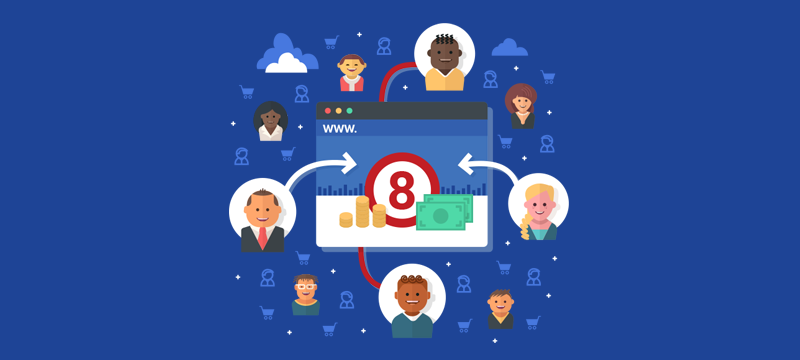In today’s consumer-led marketplace internet users have high expectations of the websites they visit. Indeed, many would sooner buy from a site that offered a great customer experience than one that simply offered a lower price. Beating the competition, therefore, means ensuring visitor expectations are met and here are eight of the things that visitors most want.
- A reason to shop with you
Modern consumers make value judgments about companies before they use them. They want to know about your expertise, your values, the people who work for you, the quality of service they can expect from you and more. All this information that makes your company unique and attractive to new customers should be clearly available for them to read on your About Us page. - Your location and contact details
Consumers find it difficult to trust businesses that don’t display their physical address on their website. At best, it looks like the company has something to hide, at worst, it can make people wary it’s a scamming website. While displaying your address can be off-putting to some international shoppers who might be reluctant to buy from countries where products may take a long time to arrive or there may be import duties, most of them would prefer the transparency.
The same goes for contact details. Customers want to be able to contact you easily and conveniently in case of cancellation or issues with the product or delivery. When these details are not easily found (they should be on the Contact Us page) many shoppers will not take the risk and simply go elsewhere. - Social proof
Anyone can sing their own praises but today’s shoppers are not so easily convinced by clever sales talk. Before using your company, the majority of them will go in search of independent verification about the claims you make – in particular, they’ll look at review sites.
It is in your interests, therefore, to garner as much positive feedback on third-party review sites as possible. What’s more, you should make a feature of this on your own site. Besides this, you can also use testimonials, clippings from media mentions and links to other websites where you have been mentioned. - The green padlock
The green padlock icon that appears next to a website’s URL in the browser address bar is the universally recognised symbol to denote a secure website. Indeed, the word ‘secure’ appears with it. If there is no green padlock, the warning says, ‘not secure’. Customers are much more inclined to buy from a site that Google says is secure than one that isn’t.
The remedy is easy. To get a green padlock icon you’ll need to install an SSL Certificate which you can obtain through your web host. Their function is to encrypt personal data during the purchasing process so that banking details and other information cannot get stolen in transit. - Easy to navigate, easy to understand and easy on the eye
Whether viewed on PCs, tablets or mobile phones, you need to make it as easy as possible for your visitors to find the information they are looking for. This means easily seen and simple to use menus, search bars and footer links; clearly laid out, attractive pages with helpful headings; plenty of white space and text that’s easy for everyone to understand. - No more small print
Every website has its own policies, procedures and information pages. In the past, many companies used to deliberately put the information on these pages in small print, making it difficult to read, while using legalese language to prevent people from clearly understanding the content.
Today, customers expect you to be upfront about everything and want to see these pages explain things in simple terms and in a font size that’s not going to give them a headache. Often the FAQ is the best and most helpful approach. - Clear calls to action
The whole purpose of your website is to get visitors to do things, whether that’s to find out more, sign up, add to basket or buy now. What many websites aren’t good enough at is showing customers how to take these actions. Indeed, many will have lost numerous leads or sales simply because it’s not clear on the page how to take the next step. Visitors need clearly visible signs on the page so that taking action is simple. - Personalisation
If you have a website where you have user accounts, those account holders now expect to be dealt with on a personal level. They’ll want to be addressed by their name, have personally relevant content on their home screen and will expect offers and discounts that are of interest or value to them.
You can only do this by collecting data on your customers, such as previous shopping and browsing habits and by obtaining helpful information from them about what they are interested in. Armed with this and suitable personalisation software, you can build your website around the needs of individual consumers, much like Amazon and eBay, and reap the significant benefits that result.
Conclusion
As you can see, today’s internet users have very high expectations of the websites they visit, though the chances are that you will have much of this already in place. If there is anything you have overlooked, hopefully, the points mentioned here can help your site provide an even better customer experience.
If you are looking for reliable, secure hosting for your website, check out our cPanel or WordPress Hosting solutions.

